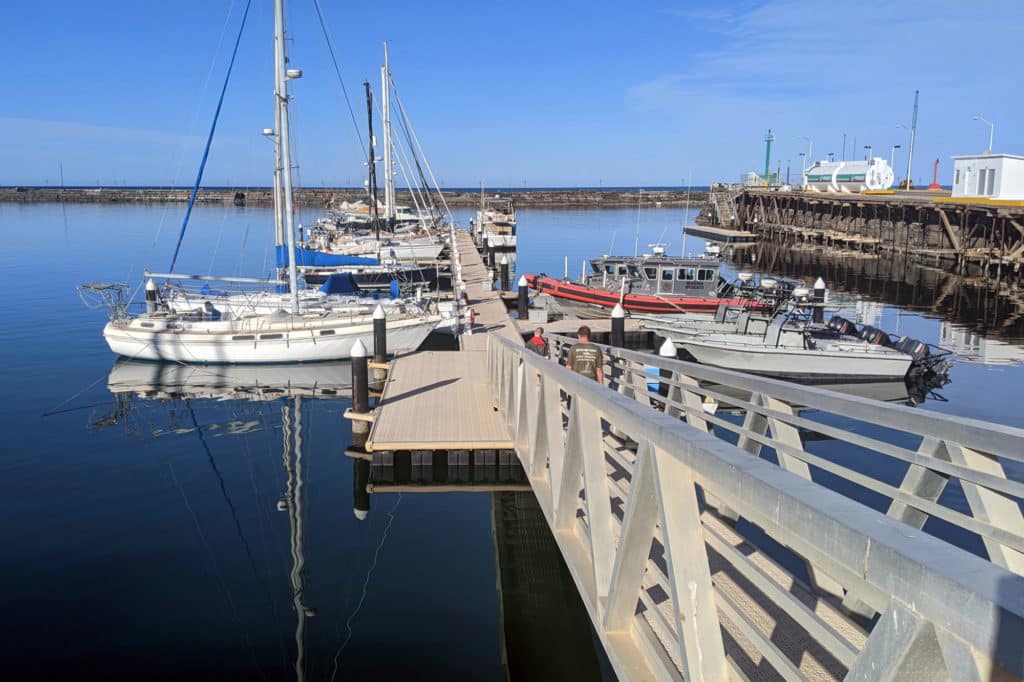
Weather always wins. Schedules are the enemy. Between these two principles for safe cruising, Totem and crew have remained in Santa Rosalia for an extended stay – weeks more than anticipated. Our goal destination is only about 250nm to the north: returning to Cabrales Boatyard in Puerto Peñasco to dig into our engine issues. Why is this distance, which we’d normally do in 40 or so hours, proving to be so complicated?
Weather drives our decisions, and it’s the primary reason we are still cemented to the dock. We want easy conditions: partly for our personal comfort, and partly to avoid any situation that could over-work our somewhat compromised engine. We’re a sailboat, so what’s the big deal?
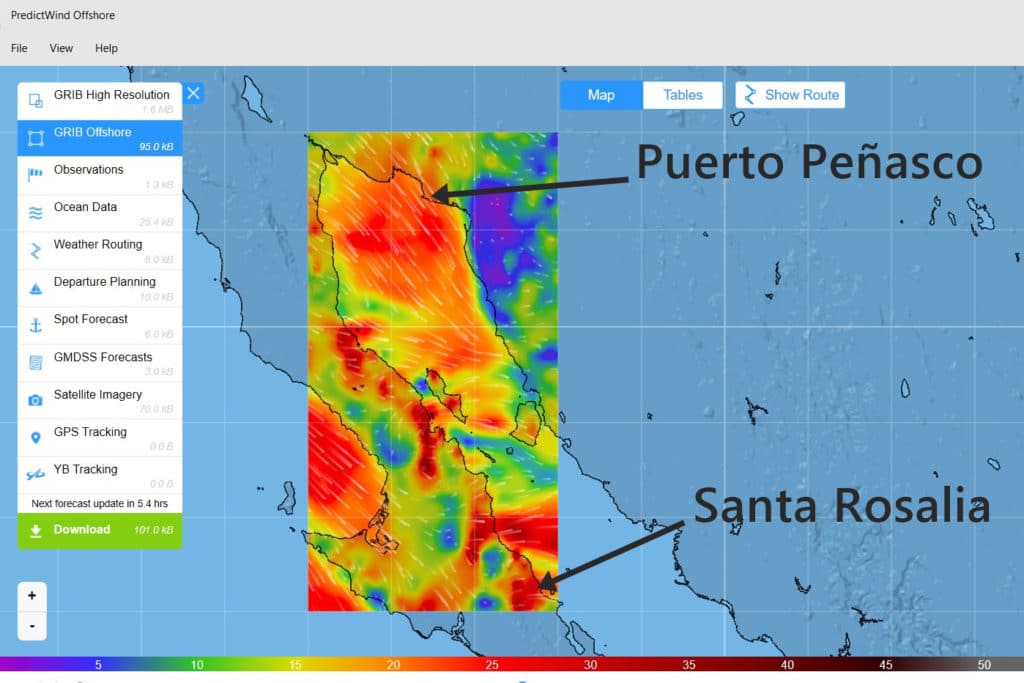
In the wintertime, strong northerly winds dominate the Sea of Cortez. They make slab-faced waves two or three seconds apart. Wind and water from the direction we want to go. We like to live by the code that “misery is optional,” and bashing into square seas for 250 nm is not consistent with that tenet.
These frequent northers generate over the Four Corners in the US southwest and are readily forecasted. But Sea of Cortez weather is also affected by Pacific Ocean weather, complicating the gaps between northers. This diagram helps illustrate: the red boxes are areas between mountain ranges, flatter terrain where gap winds accelerate across to the sea. Those yellow boxes are the dominant ranges, which fuel katabatic (falling) winds.
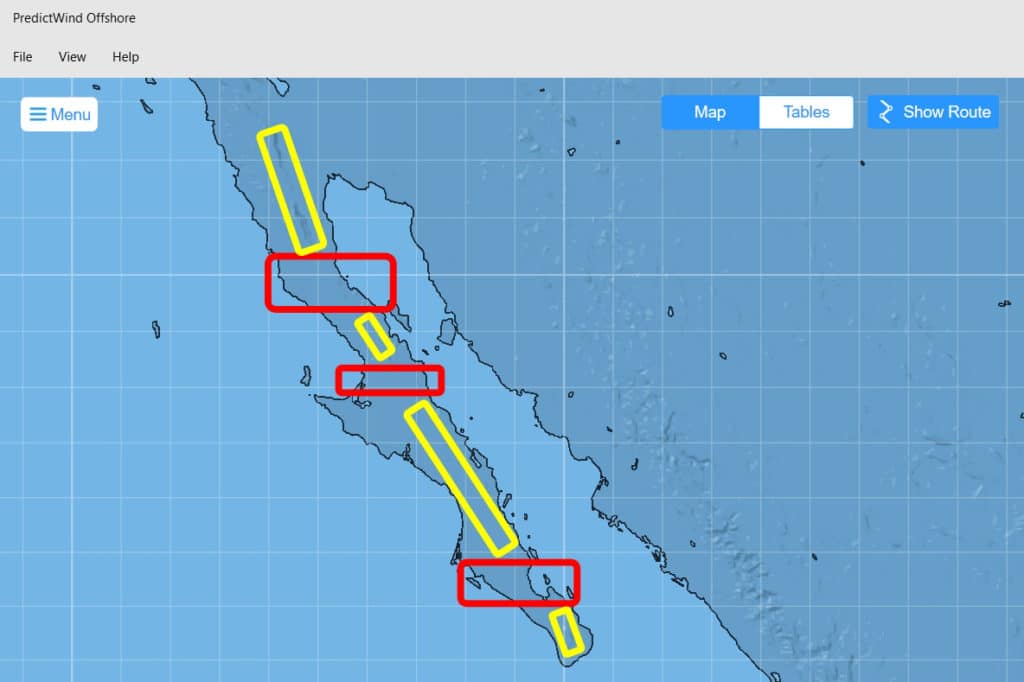
Our juggle: to find three days of mellow weather that let us get back north. We really need only two days to transit 250 nm, but prefer the extra day to allow seas whipped up by the prior system to flatten. Misery is optional!
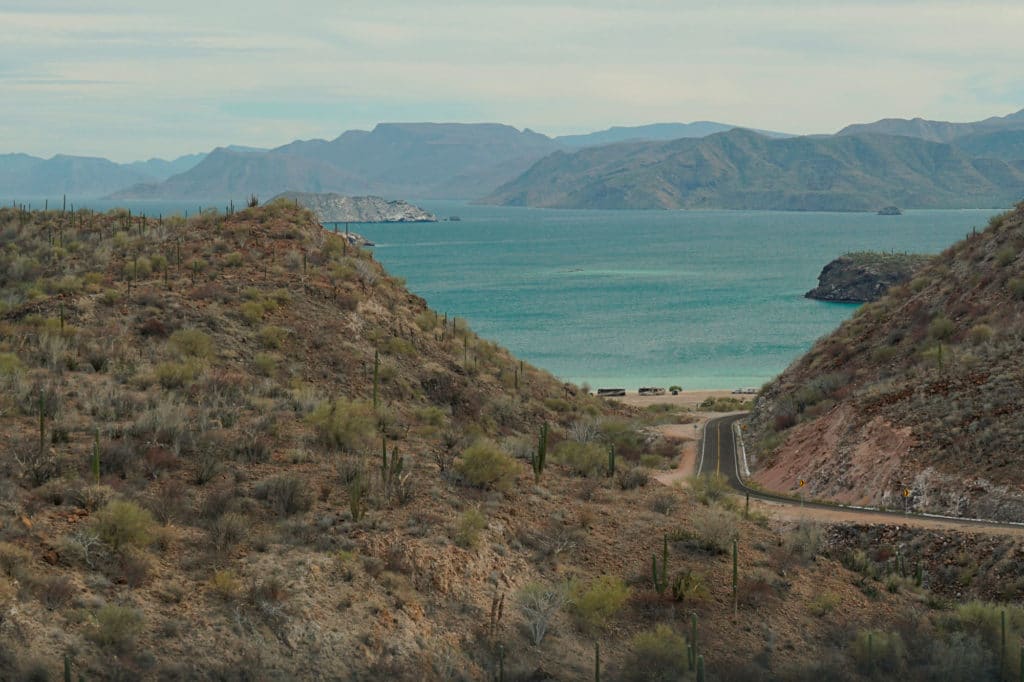
This is where our second factor kicks in: TIME. If we are willing to spend a week or more offline, we’d hop one day north to Bahia San Francisquito or Isla Partida in a weather window otherwise too short for the entire trip. We’d wait out 25-knot to 50-knot winds tucked in there, looking for the next window to proceed north. The catch is that waiting period is often about a week.
We are a victim of our success at the moment, unable to take a week off from high-bandwidth internet. Our coaching business is thriving, and frankly, we love it (how lucky are we to be able to help people realize the cruising dream?!), and frankly, we need the income (that engine…).
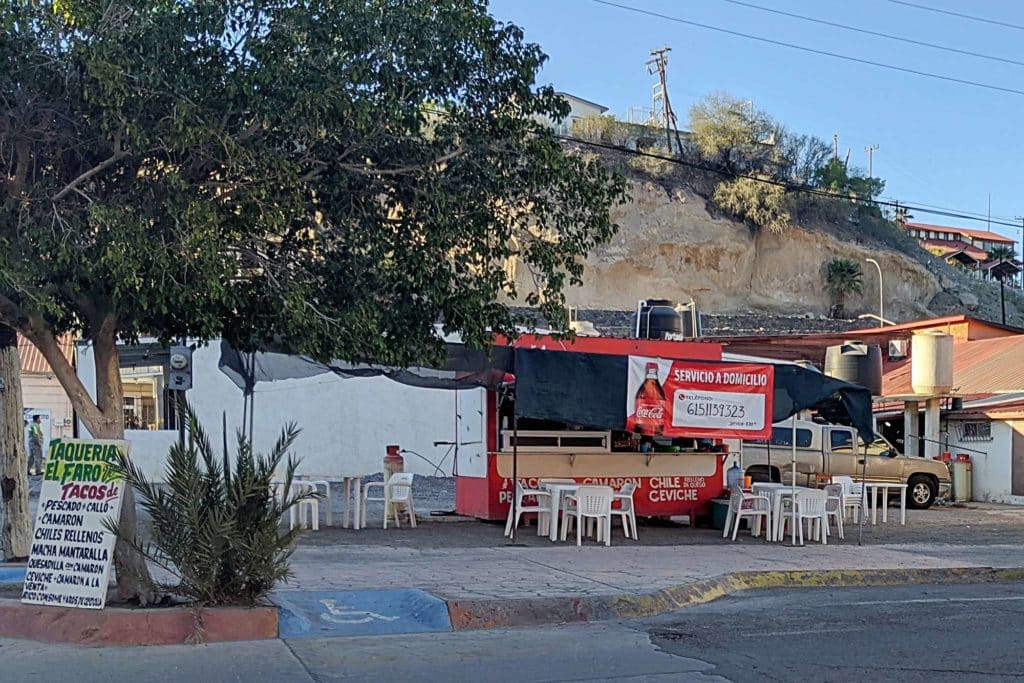
Supporting between 45 and 50 clients has kept us pretty busy. Almost half of the TRU crew we’re actively working with are recently launched as cruisers, navigating the hurdles of their new lifestyle. Others are more tenured, and it was pretty exciting this week to see our third TRU client close the loop on a three-year circumnavigation. A big congratulations to the Mirabella crew!
While we’re away from cell towers, we keep up with email via our Iridium GO, but our days are filled with video chats to talk about a prospect boat, zooming in to high resolution images of chainplates or GRIB files for weather routing. Adding a number of seminars into the mix means more bandwidth. Text-only connectivity of the GO email is fine for normal cruising, but it isn’t good enough to keep up with those demands.
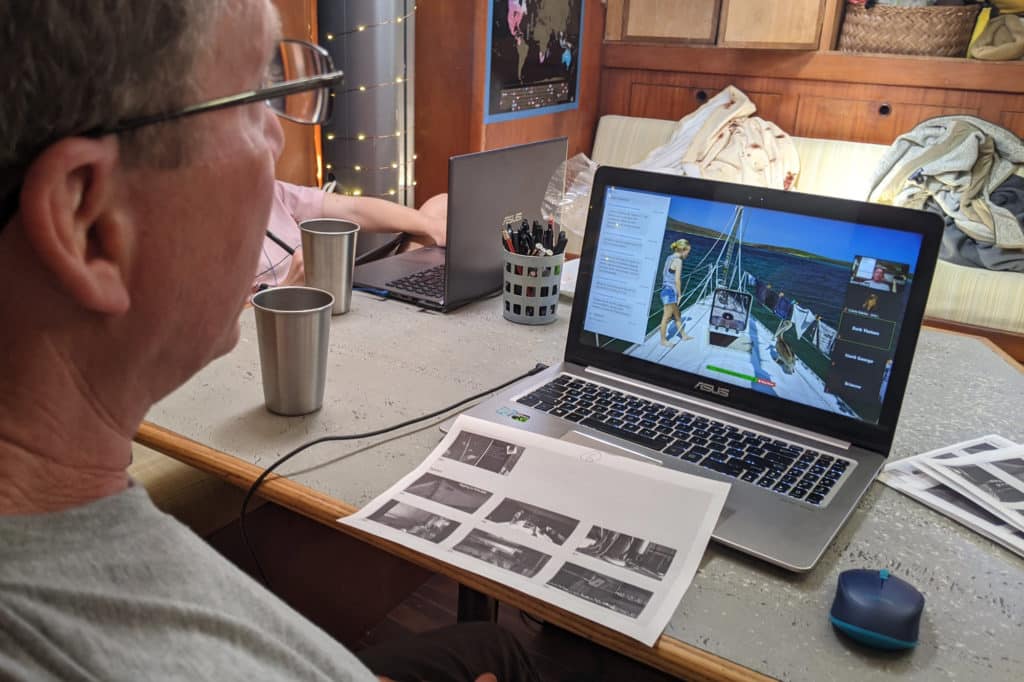
Are we frustrated or disappointed? No, not really. Sure, we’d really like to be back at Cabrales Boatyard among friends (it’s special! Read our Ode to a Shipyard Community to see why). Santa Rosalia is nice, but there’s no cruiser community to partake in. We miss camaraderie of sharing meals, laughs, and tools with the friends back at Cabrales. Our teens missed another teens birthday, one we were SURE we’d be able to make… by February 28.
In many ways this is a good reminder of some cruising principles that bear repeating. Weather always wins. Schedules are the enemy. In this case, schedules are our inability to be away. That can apply to cruisers who are trying to juggle working while afloat like we are. But it can also apply to those who are trying to get to that next island to meet friends flying in that they’ve invited for a holiday. It’s easy to be tempted into making bad decision that result in being miserable at best, and unsafe at worst, when letting a schedule convince you that it’s OK to tempt the weather.
Meanwhile, we are in early transition away from the northerlies towards what will become light southerly winds, which dominate weather in the relatively airless hot months of summer. And meanwhile, we make the most of where we are.
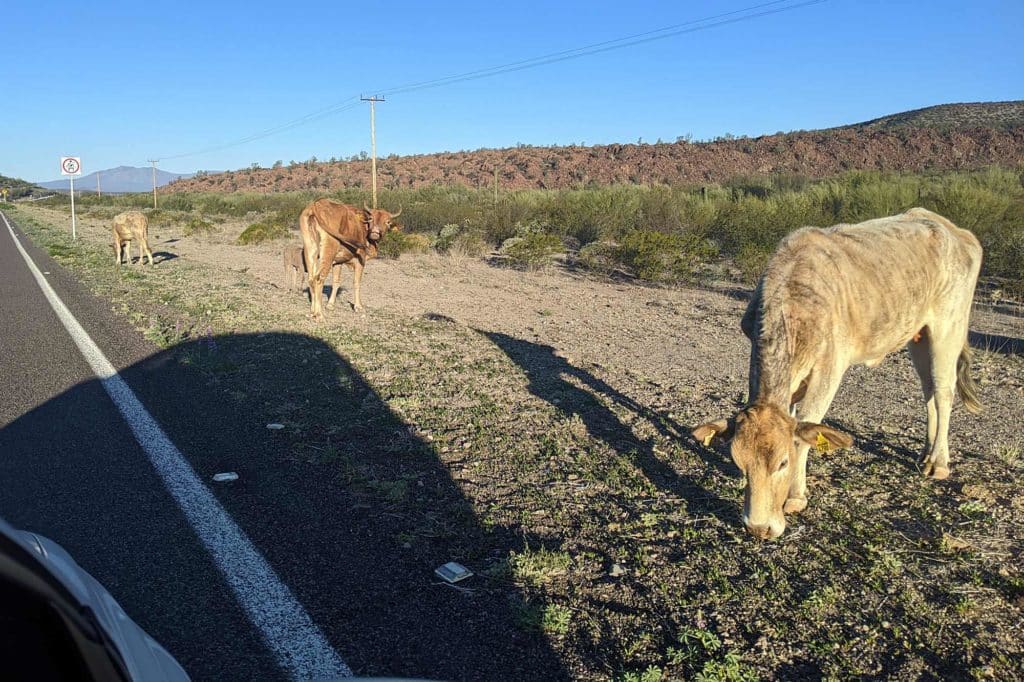
Marking the one-year anniversary of the pandemic’s arrival in our reality, we look back with the benefit of optimism that there is a better, freer time coming soon. Our daughters turned 16 and 18, milestone birthdays that passed while in isolation instead of being celebrated. They’ve been incredibly patient throughout. Their maturity is a testament to the flexibility bestowed upon them by growing up as cruising kids: change happens, and you adapt. Not all phases are fun, but you make the most of them and carry on to a better time.
Jamie and I wanted to do something special for them. And the happenstance of being parked at this particular corner of Baja, at this particular time of year, suddenly came into focus: directly across the peninsula, the San Ignacio lagoon carves in from the Pacific – and teems with grey whales. For about two months a year, this UNESCO world heritage site is the mating and calving grounds for the migratory whales. And so, we went.
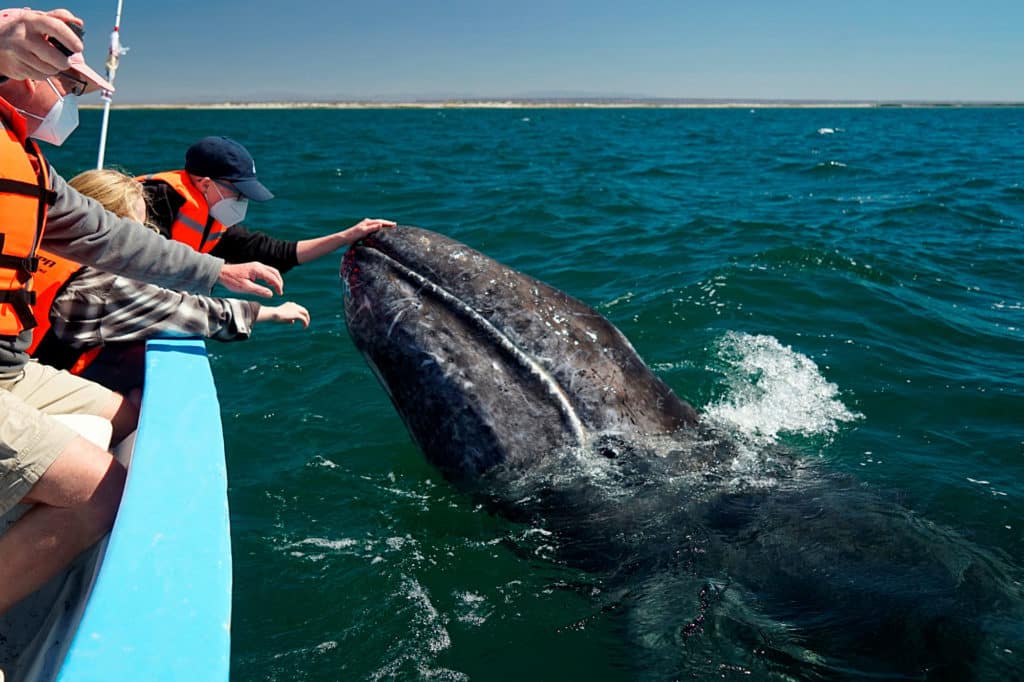
It’s unusual for us to splash out like this. It took a lot of time for me to figure out how we could do this in a way that aligned with our risk tolerance. But with work going well, and money saved from, well, not going out much this year – the splurge wasn’t hard. The ability to book an entire boat to ourselves instead of sharing it with folks who may not share our risk profile made it possible.
Can you imagine the feeling of being checked out by a whale? We first experienced it in Papua New Guinea when false killer whales made flyby passes, rocketing by our dinghy. The Greys were entirely different: the massive mother parking herself immediately below, and perpendicular to our panga. Her curious calf first spyhopping, then riding up on her back to get a closer look at the above-water creatures.
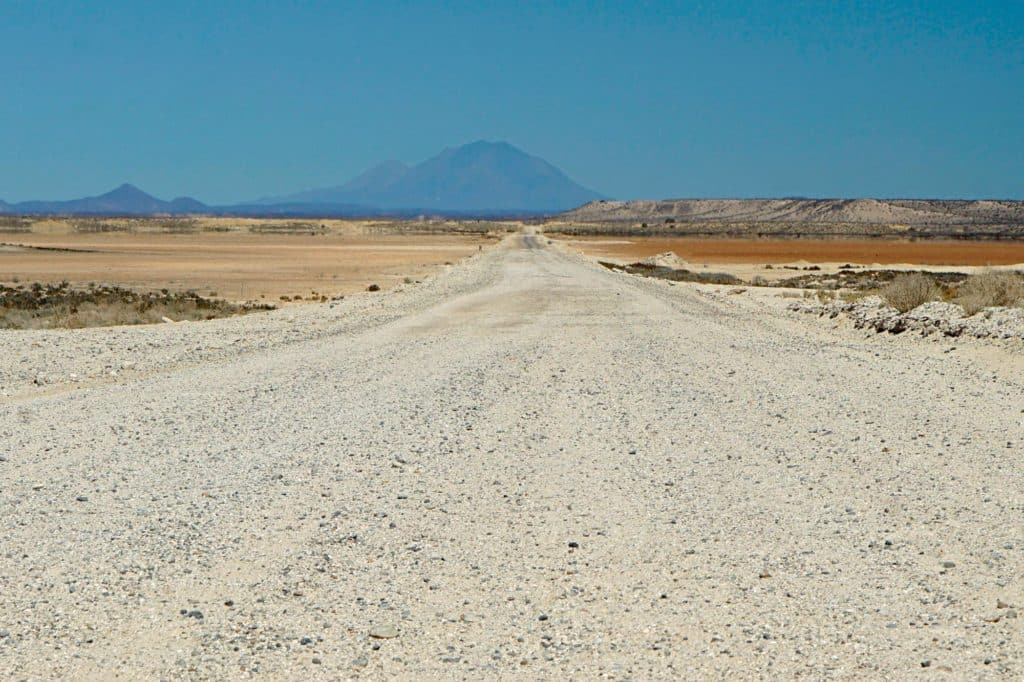
We’ve seen a lot of badly done whale watching, with aggressive guides bent on delivering “the experience” to the benefit of tips and the detriment of whales. This bore no resemblance, and our captain’s respect for the whales and other boats in the area unquestionable. Despite 27 years’ experience driving boats in the lagoon, his unjaded enthusiasm greeting the whales that approached our small vessel was the best and only kind of contagion we encountered.
It’s a bright spot, one among many which feel like they are gathering to move us all forward, slowly, surely!








